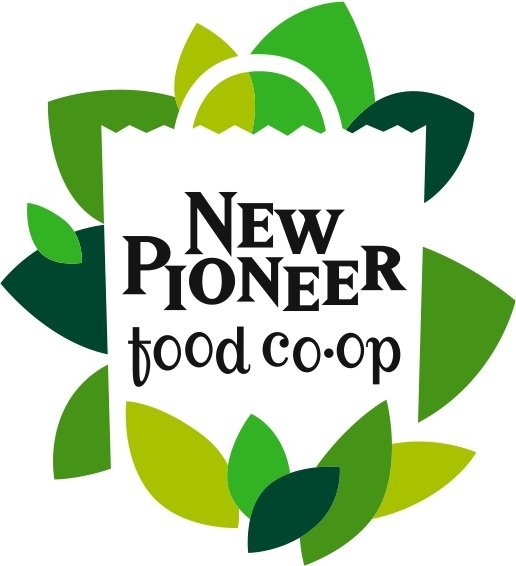[Enjoy New Pi Iowa City customer service star Erin McCuskey‘s guest post on the wonders of our 32-Bean bulk mix! –Allison]
The dark days of January are here. What for again?

I often have to remind myself that this post-holiday month is for a time of slow renewal. Like a bulb waiting for spring, we can hide out in our dens and fashion our own regeneration for the new year. For me, it’s also a great time to make slow-cooking food and watch long movies.
I’ve been touting a humble gem from our bulk department for some time: our often-overlooked 32 Bean Soup Mix. It’s one of those great hearty recipes that can be vegan, vegetarian, or for omnivores. Last time I was purchasing the soup mix for my family, I asked my cashier – Store Team Lead Mike Gustaveson – if he had tried it, and he looked up at me with conviction in his eyes and said, “This is my favorite thing we sell in the whole store.”
My recipe for this soup has varied over the years, depending on what I have and/or how much prep I want to put in. Last time I made just the basic recipe it turned out with this lovely tomato-gravy background for the beans that were cooked to a perfect al dente. The next day it was an excellent topping for an egg in a basket – and would also be great on a cake of polenta.

Guest blogger Erin and one of her favorites from the 32-bean mix.
Which bean in the mix is the Rattlesnake bean? Or the European Soldier? The Tongue of Fire – is that even real? The mix’s ingredient list is really incredible, and it happens to be fairly low sodium (and you can take it home with you for a very reasonable $4.99/pound).
Put it all on the stove, watch the first half of Barry Lyndon, and wait for the magic to happen. If you’re cooking with a ham shank, watch the whole film, and then enjoy.
Pair with:
Peace Tree Black River Gumbo Stout (a seasonal local beer). Stillwater Artisanal Folklore is a fine choice as well. [Both available at New Pi Iowa City.]
Earl Grey Tea with lemon.
Mixed greens salad with Annie’s Sesame Shiitake dressing or New Pi’s house-made Japanese dressing.
New Pi’s Pain Puttanesca bread, sliced and toasted under the broiler with olive oil.
Green & Black’s hazelnut currant dark chocolate.
Erin’s Basic 32 Bean Soup
One cup of 32 Bean Soup Mix easily serves four.
Use a stockpot or Dutch oven for best results.
1 dry c. 32 Bean Soup Mix (in the New Pi bulk section)
splash of olive oil and/or pat of butter
1 medium yellow onion
3 medium cloves garlic
1 quart broth plus about 3 quarts of hot water
OR
about 2 T. Better Than Bouillon (see broth note below) plus 4 quarts hot water
12 or 28 oz. can of diced tomatoes, per your tomatoey preference
optional (but certainly desirable if not vegetarian!): ham hock or shank
(There is none better than our local Beeler’s ham shanks, stocked in New Pi’s meat freezer.)
vegetables of choice (see below)
spices & seasonings of choice (see below)
Veg. options:
mushrooms
celeriac or celery
carrots (note that there are already some dried carrots in the mix)
leeks
parsnips
red pepper
jalapeño
sunchokes (aka Jerusalem artichokes)
Broth options:
Better Than Bouillon (we carry chicken, beef, and mushroom) is a great product to have in your fridge – very versatile, and you can make as little or as much broth as you need. It tends to be a bit stronger-flavored than boxed broths, hence my lighter recommendation.
Spice options, to taste:
cayenne pepper
Worcestershire sauce
lemon juice
vinegar
bay leaf
parsley
thyme
Sauté the diced onion in your choice of oil and/or butter. Keep the pan on the low side of medium and add any chopped vegetables. Stir and allow vegetables to release some of their water. Keep the heat low enough so it doesn’t brown.
When the onions start to become translucent, add the chopped garlic (I am a convert and now just use the garlic press). Let the garlic cook for just another minute until it releases its flavor. Add the soup mix and sauté the mix with the vegetables for about a minute.
Add broth and/or water. Bring to a hard boil for about ten minutes.
Add the ham hock and reduce to a low simmer. Add any of the suggested additional spices, keeping it to pinches and dashes.
Cook 2-3 hours.
If cooked with a ham shank, remove it from the pot, pull the meat from it, and return it to the pot. Add the can of tomatoes about twenty minutes before serving (this brightens up the color of the soup from bean-brown to a warm red).
Salt and pepper to taste.
41.660489
-91.528504











